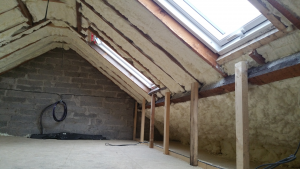Attic Spray Foam Insulation Aughrim
3 Bed Semi Attic Insulation Aughrim
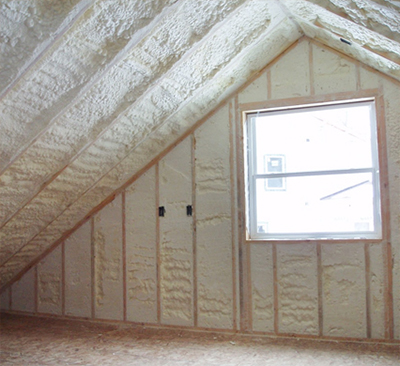
Attic Insulation Aughrim
Spray foam is versatile and can be used for a wide variety of purposes. Spray foam is beneficial for roofs, windows or exterior walls.
Spray foam insulation will keep your home warm during winter and cool in summer. Because of its “Cell” structure and composition, it allows moisture-laden air to escape. This helps the house breathe.
Benefits of Spray Foam Insulation for your home
Other applications include commercial and industrial buildings, agricultural farm houses, warehouses, commercial and industrial buildings as well as shipping containers, vessels and the refrigeration industry.
It also acts as an airtight shield around the house to keep out cold wind and rain. It allows the heat from your home to escape, which is what most other insulating products today fail to do.
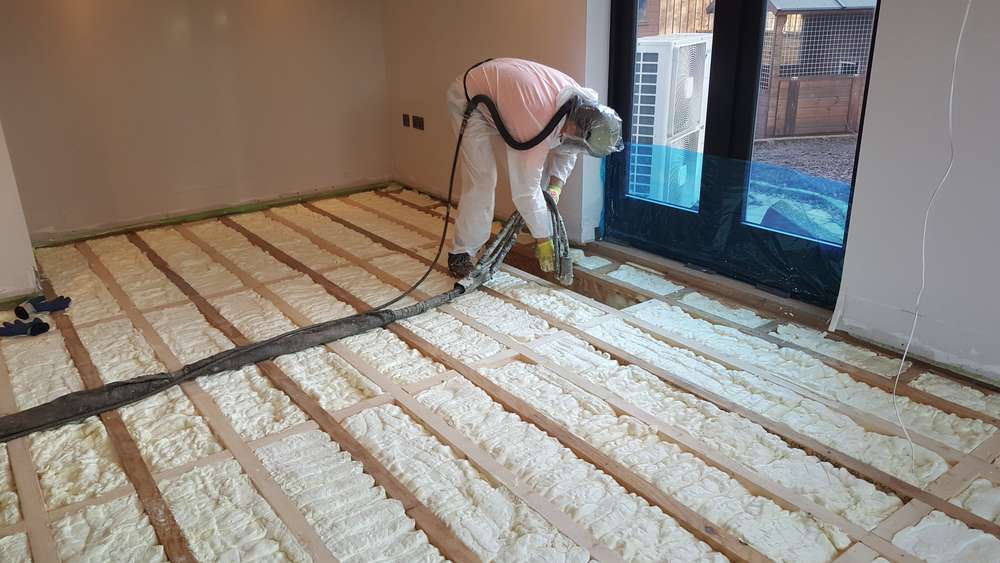
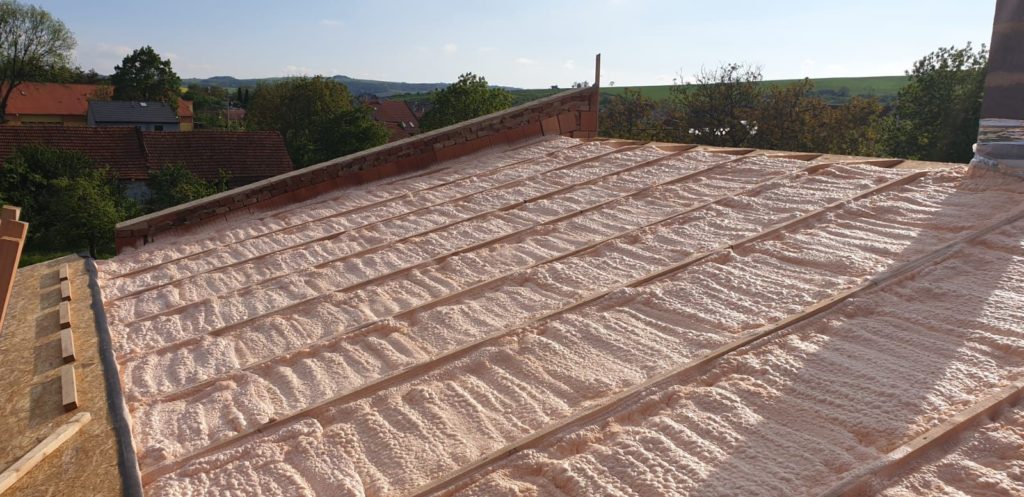
Cost Price Of Spray Foam Insulation
Spray foam insulation is without doubt the most efficient insulating material today. It has a higher U value than other insulating materials such as rock wool, fiberglass and cellulose.
Spray foam insulation is excellent as a sound barrier. Spray foam insulation significantly reduces noise from outside. It is a great advantage if a company or home is in a densely populated area or close to an airport.
Insulate Your Aughrim Property Properly
It’s used to dampen sounds that travel from room to room and across floors between interior walls. It is particularly useful in bathrooms, where the noises of flushing toilets and showers can be annoying.
It is easy to use and does not cause any disruptions to your daily activities.
An Irish traditional home can be insulation in one day.
Encasing the pipes and insulation reduces noise coming from under-floor or in-wall piping.
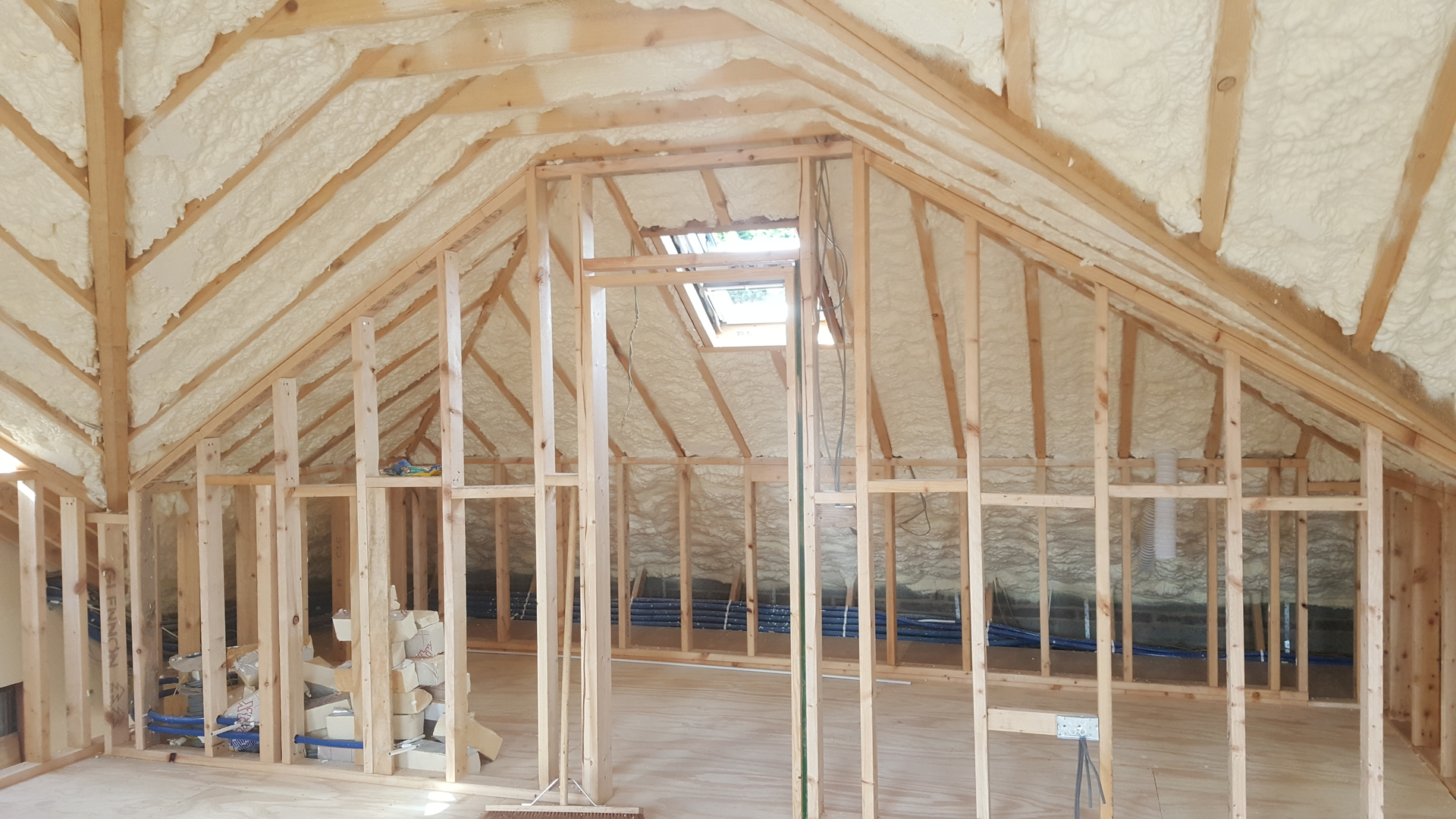
If you plan on using the loft/attic as storage space, you should lay boards above the joists. The insulation will not be thick enough if it is only between the joists.
This material reduces the sound transference significantly when it is used within walls, attics or roofs, as well as floors, in comparison with fibreglass, rock wool, and polystyrene board. The dense composition of the material and the application process result in a completely airtight enclosure. It stops sound infiltration from the outside environment such as traffic or pedestrianised streets.
It also prevents sound generated from within a building from reaching adjacent floors or the floors below them. Spray foam insulation could reduce the amount of noises generated by structures such as running showers or washing machines.
Spray foam insulation is flexible but densely packed with millions if minute air bubbles. This will absorb vibrations from the floor as well as the sound waves. Spray foam insulation reduces the transmission and propagation of airborne noises by sealing every crack and crevice.
Spray foam insulation can also dampen, if not completely eliminate, sounds from floors such as water moving through pipes. It surrounds pipes securely, preventing them rattling. It also prevents hot water from flowing through the pipes, which can cause the wooded beams to creak, crackle and expand.
It also prevents heat from escaping the upper floors. This causes the lower floors of the building to cool down, which then requires more heat in order to keep them warm.
If your loft is easily accessible and does not have condensation problems, insulation should be straightforward.
An uninsulated home loses 25% of its heat through its roof. Insulating your loft or attic is a great way to cut heat loss and save money on heating.
If it’s easy to access your loft and your joists are straight, you can use rolls mineral wool insulation. The insulation is first laid between the horizontal beams, or joists, that make up the loft floor. Next, another layer is laid at right angles so the insulation can be covered to the desired depth.
You can raise the floor to get sufficient insulation. You can install timber battens on the floor joists. Or, you can use purpose-built legs made of plastic that fit on the leg and support the floor. It is essential to allow ventilation between insulation and boards in order to prevent condensation.
It is important to not squash the mineral fiber when you put the boards on top. This can reduce its insulation.
Insulation stops heat loss from living spaces. By making your loft space cool, you can prevent damp or condensation from developing. You may need to increase ventilation if you install loft insulation yourself.
Another way to insulate your loft would be to place insulation between and above the rafters. These are sloping timbers which make up the roof. Either rigid insulation boards can be carefully cut to the required size or foam insulation can be sprayed between each rafter.
Some companies may offer to repair your roof with foam insulation. This is something that we do not recommend. You must ensure that your roof is in good condition before you apply insulation.
If you are looking to use your loft as an indoor heating room, you can create a space in the roof.
If you are planning to use your loft for living, or you already have it, you will need insulation between the heated space and unheated area.
For your home to remain fresh, dry, healthy and clean, it needs air flow. An experienced installer will not block or seal any intended ventilation. You should not cover vents, grilles, or airbricks when you are doing DIY insulation.
A professional can install blown insulation in a loft that is difficult to reach. They will use special equipment to blow the appropriate insulation material into any space. They can use mineral wool fibres or treated cellulose or polyurethane.
Flat roof insulation may save you the same amount as loft insulation on your heating bills. The cost savings will depend on the size of the flat roof.
You can probably insulate your loft yourself if it is accessible and does not have damp problems. A professional installer is required for cases where damp problems are present or complex insulation systems are needed.
The cold air from your loft could lead to cold draughts through the hatch. You can prevent this by fitting an insulated loft hatch, and placing strips of draught-exclusion material around hatch edges.
Insulating your groundfloor is a great way for your property to stay warm as well as lowering your energy bills.
Insulating a loft in your home is one of most cost-effective ways to reduce heating bills. Even if the loft already has insulation in place, it is essential to use it at its best.
Loft floor rolls are the traditional choice. These roll out along the loft floor. They are quicker to lay than insulated flooring boards. They come in both loose and encapsulated (blankets) rolls. These can be used to create base and top layers. You can use stilts or boards to board them. This will create a raised platform that is suitable for storage.
These are not recommended items or tips that were included in the list of tools and materials. Before you start insulation of your loft floor, make sure you have read all instructions.
There may be some insulation in your home, but it may not work well. This could happen if the insulation isn’t topped up regularly or has been compressed by storage board. Older properties may have a loft floor as low as 25mm deep.
It’s not necessary to remove loft floor insulation. To achieve the recommended amount, you can just add one or several layers to it. You will find more information about the recommended amount in the article.
Your loft floor’s joint spacings will affect the width of the roll. This is because the insulation rolls between these joists. It is best to choose one that matches your joist spacing. This reduces the need for trimming.
The insulation must have the required thermal resistance. If you only want to lay loft rolls, there is an alternative method that measures the insulation thickness. Refer to the section titled “How to calculate the loft floor insulation thickness required” for more details.
Areas We Service
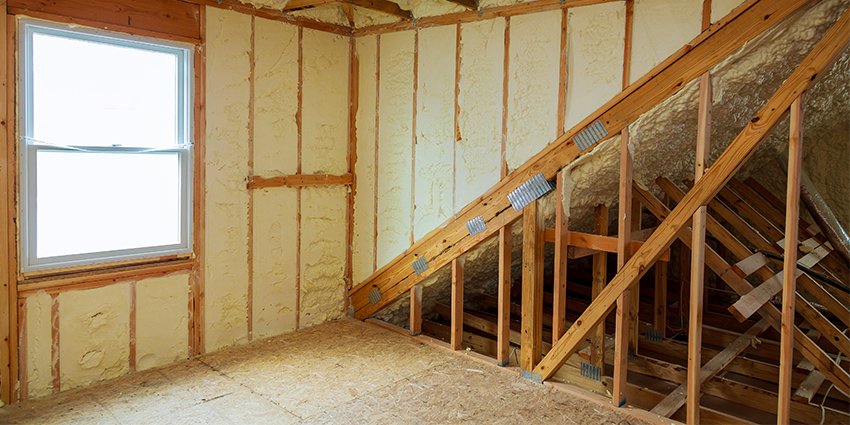

Parkhill, Dublin
01 5255297
